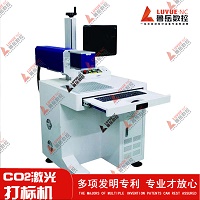
- English
- Español
- Português
- русский
- Français
- 日本語
- Deutsch
- tiếng Việt
- Italiano
- Nederlands
- ภาษาไทย
- Polski
- 한국어
- Svenska
- magyar
- Malay
- বাংলা ভাষার
- Dansk
- Suomi
- हिन्दी
- Pilipino
- Türkçe
- Gaeilge
- العربية
- Indonesia
- Norsk
- تمل
- český
- ελληνικά
- український
- Javanese
- فارسی
- தமிழ்
- తెలుగు
- नेपाली
- Burmese
- български
- ລາວ
- Latine
- Қазақша
- Euskal
- Azərbaycan
- Slovenský jazyk
- Македонски
- Lietuvos
- Eesti Keel
- Română
- Slovenski
- मराठी
- Srpski језик
What Makes a Portable Marking Machine a Game-Changer in Industrial Marking?
2025-11-26
Portable marking machines have revolutionized the way industries handle identification, traceability, and labeling of components. These versatile devices allow operators to mark metal, plastic, and other materials with high precision, whether in a factory, workshop, or on-site environment. Unlike traditional fixed marking systems, portable marking machines provide flexibility, mobility, and ease of use, enabling businesses to maintain efficiency and accuracy across a wide range of applications.
What is a Portable Marking Machine and How Does it Work?
A portable marking machine is a handheld or lightweight device designed to inscribe serial numbers, logos, barcodes, and other identification marks on various materials. The primary working principle involves either dot peen marking, laser engraving, or electrochemical etching, depending on the model. Operators can carry these machines directly to the workpiece, eliminating the need to transport large components to a fixed station.
Key Functions:
-
On-site marking: Direct application on large or installed components.
-
High precision: Ability to create detailed alphanumeric codes, logos, and patterns.
-
Versatility: Suitable for metals, plastics, and composite materials.
-
Durability: Marks are resistant to wear, heat, and corrosion.
Portable Marking Machine Parameters:
| Parameter | Description |
|---|---|
| Marking Method | Dot Peen, Laser, Electrochemical |
| Marking Area | 50mm x 50mm to 200mm x 200mm |
| Marking Speed | 1000–6000 mm/min |
| Character Size | 0.5mm – 15mm |
| Power Supply | AC 110V/220V, 50/60Hz |
| Operating Temperature | 0°C – 45°C |
| Machine Weight | 4kg – 12kg depending on model |
| Supported Fonts | Numeric, Alphabetic, Chinese characters, Custom logos |
| Interface | USB/Serial/Software-controlled |
| Portability | Handheld, Lightweight, Easy to transport |
This table provides a clear view of what professionals can expect when selecting a portable marking machine, highlighting both performance and flexibility.
Why Choose a Portable Marking Machine Over Traditional Marking Methods?
Industries have increasingly shifted toward portable marking solutions due to their unmatched efficiency and adaptability. Unlike stamping or fixed laser machines, portable units allow marking directly on assembled machinery, pipelines, heavy equipment, and large structures.
Advantages of Portable Marking Machines:
-
Mobility and Flexibility: Move the machine to the workpiece instead of moving the workpiece to a station. Ideal for large or immovable components.
-
Time and Cost Efficiency: Reduces downtime associated with transporting heavy equipment to marking stations.
-
Precision and Reliability: Offers consistent marking quality with programmable patterns.
-
Versatile Applications: From automotive and aerospace parts to industrial machinery and tool identification.
-
Low Maintenance: Designed for rugged industrial environments with minimal upkeep required.
Applications Across Industries:
-
Automotive: VIN marking, serial numbers, component traceability.
-
Aerospace: Part identification, compliance with safety regulations.
-
Tooling and Manufacturing: Durable labeling of molds, dies, and tools.
-
Energy Sector: Marking pipelines, valves, and heavy equipment.
-
Metal Fabrication: Permanent marks on stainless steel, aluminum, and alloys.
By choosing a portable marking machine, industries can optimize workflows while maintaining the integrity of critical components, a crucial factor in quality control and regulatory compliance.
How to Maximize the Use of a Portable Marking Machine?
The effectiveness of a portable marking machine depends on operator understanding, proper setup, and correct usage. Mastering the machine ensures accurate and long-lasting marks.
Key Operational Guidelines:
-
Machine Calibration: Adjust the marking depth and speed according to material type.
-
Software Integration: Use the provided control software for design customization.
-
Maintenance: Regularly check pins or laser lenses to maintain clarity.
-
Safety Measures: Wear protective equipment, especially when handling laser marking units.
-
Environmental Considerations: Ensure clean surfaces for optimal adhesion of marks.
Common Questions About Portable Marking Machines:
Q1: Can a portable marking machine mark on irregular surfaces?
A1: Yes, portable marking machines are designed to handle curved, angled, or uneven surfaces. Dot peen models feature adjustable marking heads that conform to surface contours, while laser-based machines allow flexible focal adjustments to maintain precision.
Q2: How durable are the marks produced by a portable marking machine?
A2: Marks are highly durable and can withstand abrasion, corrosion, heat, and chemical exposure. Dot peen marks create indents directly into the material, while laser markings bond with the surface for permanent identification.
To further maximize productivity, operators can integrate portable marking machines with existing production line software, enabling automated serialization and quality tracking.
What is the Future of Portable Marking Machines in Industrial Applications?
The demand for portable marking machines is expected to grow as industries seek faster, more efficient, and environmentally friendly identification solutions. Emerging trends include:
-
Smart Connectivity: Integration with IoT for real-time traceability.
-
AI-Assisted Marking: Optimized pattern recognition and automated adjustments.
-
Lightweight Materials: New ergonomic designs for easier handling.
-
Enhanced Precision: Advanced laser systems for micro-marking applications.
-
Sustainable Operations: Reduced energy consumption and minimal consumables.
Portable marking machines are no longer optional but essential in industries requiring traceable, durable, and compliant component identification. Companies like Jinan Luyue CNC Equipment Co., Ltd. are leading innovation in this sector, providing solutions tailored to industrial needs with reliable performance and high accuracy.
For businesses seeking to upgrade their marking processes, exploring the latest portable marking technologies can provide a competitive edge. Contact us today to learn more about product options, technical support, and customized solutions.




